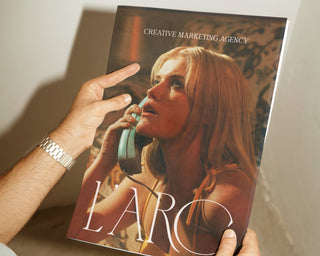Introduction: Why Do Some Brands Feel Like a Religion?
Have you ever noticed how some brands don’t just have customers—they have followers? People don’t just buy their products; they evangelize them, defend them in online debates, and even tattoo their logos on their bodies.
Think about the Apple vs. Android war, the way Tesla fans swear by Elon Musk’s vision, or how Nike devotees refuse to wear Adidas. What makes people attach themselves to a brand with such intensity? The answer lies in cult psychology—and the smartest brands are using it to their advantage.
If you want to build a brand that people obsess over, take notes from cults—minus the weird robes and brainwashing, of course.
1. A Strong “Us vs. Them” Mentality
Lesson: Make Your Customers Feel Like They Belong to an Exclusive Tribe
Cults create a strong in-group vs. out-group mentality. There’s “us” (the enlightened ones) and “them” (the outsiders who don’t get it). This feeling of exclusivity is what makes members fiercely loyal.
Brands do this all the time:
-
Apple vs. Android: Apple users feel they’re part of an elite, creative, forward-thinking group, while Android users are seen as practical and technical.
-
Peloton vs. Regular Gyms: Peloton doesn’t just sell bikes; they sell an identity—one of discipline, status, and being part of a high-achieving fitness community.
-
Patagonia vs. Fast Fashion: Patagonia customers wear their brand as a badge of honor, signaling that they care about the environment while fast fashion shoppers do not.
Key Takeaway:
Define who your brand is for—and who it’s NOT for. The stronger the identity, the more attached your audience will become.
2. A Powerful Origin Story
Lesson: Give People Something to Believe In
Cults always have a compelling origin story—whether it’s the journey of a visionary leader or a mission to change the world. Similarly, brands with a strong founding story create emotional connections with their audience.
-
Steve Jobs and Apple: Apple isn’t just a tech company—it’s the underdog that revolutionized the industry from a garage in Silicon Valley.
-
Glossier’s “For the People” Narrative: Glossier founder Emily Weiss started as a beauty blogger, building a community-first brand that disrupted the beauty industry by listening to real people instead of corporate execs.
-
Ben & Jerry’s Activist Branding: More than just ice cream, Ben & Jerry’s tells a story of ethical sourcing, activism, and counterculture rebellion.
Key Takeaway:
People don’t just buy products—they buy into stories. Make your brand’s origin feel like a movement, not just a business.
3. Symbols, Rituals, and Secret Language
Lesson: Create Branded Rituals to Deepen Connection
Cults thrive on symbols and rituals—they make people feel like they are part of something bigger. Smart brands create their own language, inside jokes, and rituals to deepen community attachment.
Examples:
-
Starbucks’ Custom Lingo: It’s not a “medium coffee,” it’s a Grande Pike Place. The brand’s secret language makes customers feel like insiders.
-
Nike’s “Just Do It” Mantra: More than a slogan, it’s a mindset that customers adopt as part of their identity.
-
Lululemon’s Shopping Bag Wisdom: Their reusable bags are filled with motivational phrases, reinforcing their cult-like lifestyle.
Key Takeaway:
Create branded rituals and language that customers can use to signal they belong to your brand’s world.
4. A Charismatic Leader (or Face of the Brand)
Lesson: Humanize Your Brand with a Strong Personality
Every cult has a charismatic leader—a figurehead that embodies the brand’s values and vision. Brands with recognizable faces build deeper emotional connections because customers feel like they’re following a person, not just a company.
-
Elon Musk (Tesla & SpaceX): People don’t just buy Tesla cars; they buy into Musk’s vision of the future.
-
Oprah (Oprah’s Book Club, OWN Network): She’s more than a media mogul—she’s a trusted guide for millions.
-
Richard Branson (Virgin): Branson’s adventurous, rebellious image is baked into Virgin’s branding.
Key Takeaway:
Put a face to your brand. Whether it’s a founder, a mascot, or a brand spokesperson, people connect with people, not faceless corporations.
5. An Initiation Process (Barriers to Entry)
Lesson: Make It Harder to Join (So It Feels More Valuable)
Cults and secret societies often have initiation rites—something you have to do to “earn” your spot. Making customers work for their membership increases their emotional investment in the brand.
Brands that apply this:
-
Supreme’s Drop Culture: You have to line up, stay tuned for surprise releases, and fight bots just to get your hands on a hoodie.
-
Harley-Davidson Memberships: Riders don’t just buy a bike; they’re part of a subculture where they earn their patches and prove their loyalty.
-
CrossFit’s Hardcore Community: The grueling workouts, nicknames for exercises, and exclusive community events make being a CrossFitter a badge of honor.
Key Takeaway:
Make joining your brand an achievement. Whether it’s an application process, a challenge, or earning “insider” status, people value what they have to work for.
6. Emotional Hook: Sell a Transformation, Not Just a Product
Lesson: Make Customers Feel Like They Are Becoming a Better Version of Themselves
Cults don’t just offer community; they offer personal transformation. The best brands do the same—they make people feel like buying their product will make them cooler, smarter, healthier, happier, or more successful.
Examples:
-
Nike sells greatness. Their ads aren’t about shoes; they’re about achieving your full athletic potential.
-
SoulCycle sells empowerment. It’s not just spinning; it’s a high-energy spiritual experience.
-
Fenty Beauty sells inclusivity. It’s not just makeup; it’s a movement that celebrates all skin tones.
Key Takeaway:
Your brand should offer more than just a product—sell an identity, a transformation, or an aspiration.
Conclusion: Build a Brand That Feels Like a Movement
Cult-like brands don’t just sell stuff—they create tribes, identities, and experiences that keep people emotionally invested for life. If you want customers to be obsessed with your brand, follow these principles:
-
Us vs. Them Mentality: Create a strong identity for your audience to belong to.
-
A Powerful Origin Story: People connect with purpose-driven brands.
-
Symbols, Rituals, and Secret Language: Develop a unique brand culture.
-
A Charismatic Leader: Humanize your brand with a recognizable face.
-
An Initiation Process: Make joining your brand feel like an achievement.
-
Emotional Hook: Sell transformation, not just a product.
Want to build a brand that people can’t stop talking about? It’s time to start a movement, not just a business. 🚀



